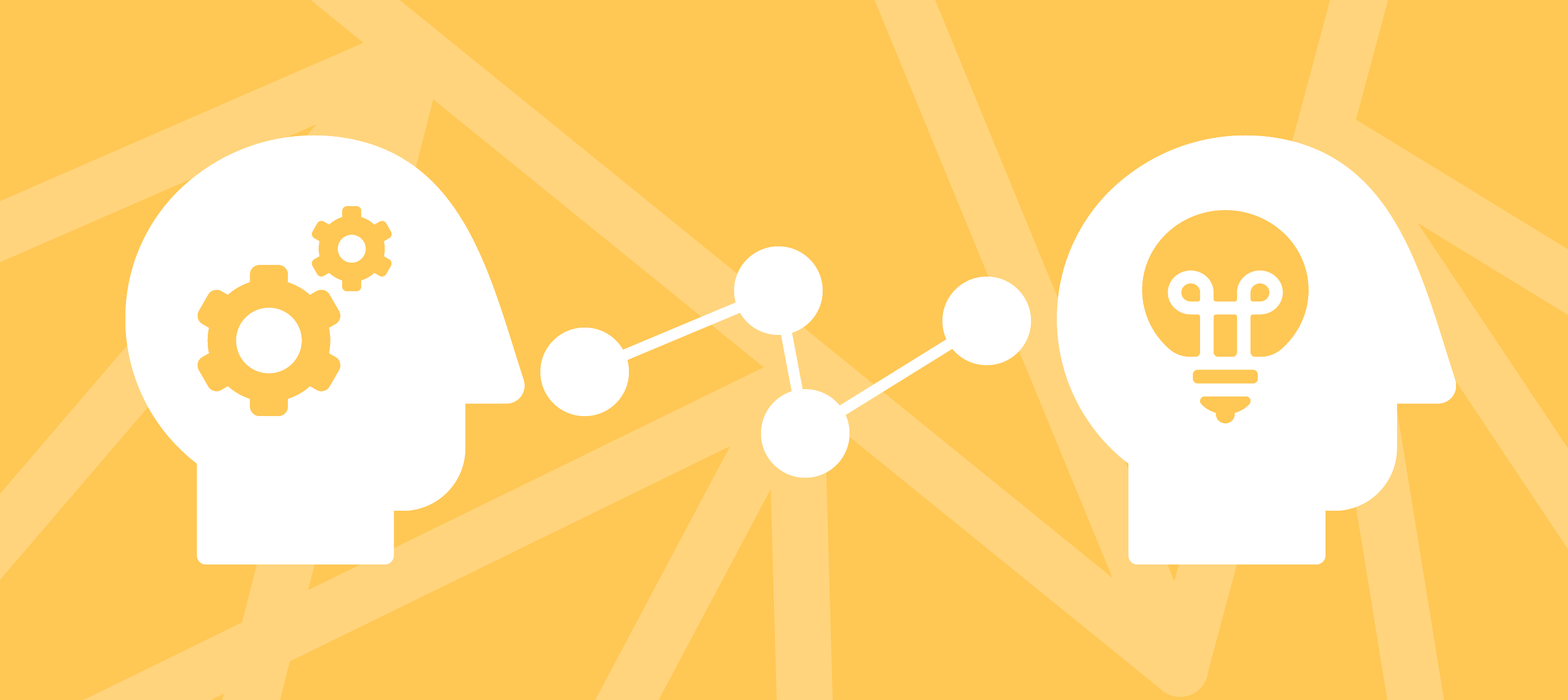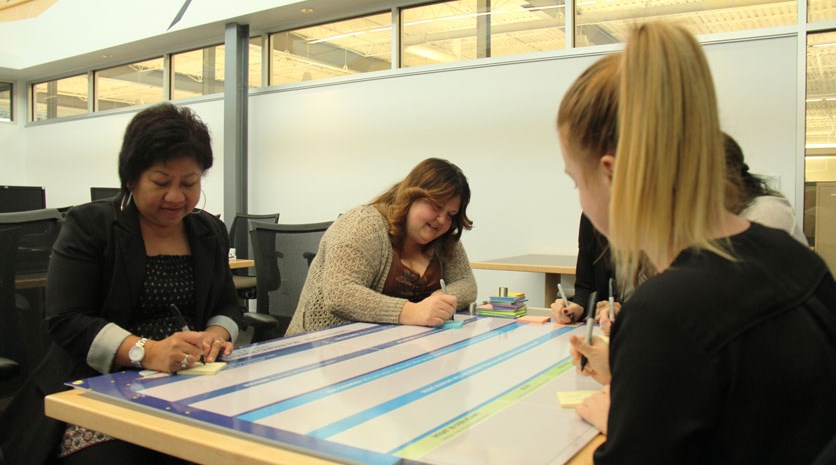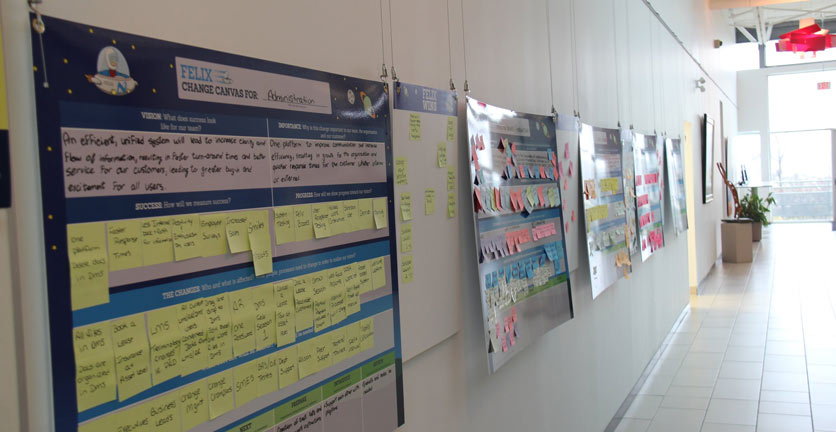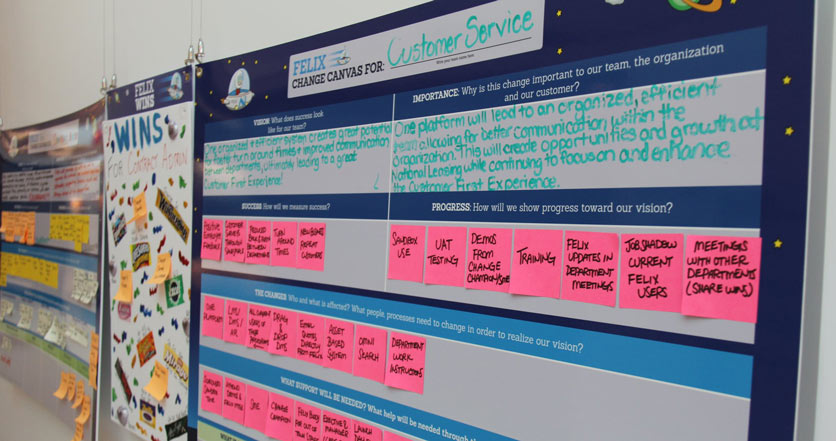
Enabling a culture of innovation
Find out how CWB National Leasing empowers employees to share ideas and innovate.
See full post

By: Jill Forbes, Organizational Learning Consultant
Those were the words I spoke (along with a super fun sound effect and giant switch off gesture) during a meeting with managers about my company’s legacy systems replacement project. One of them looked at me and laughed at my obvious theatrics. “Nice sound effect!”
Fifteen minutes later, as the meeting wrapped up, we reviewed what life would be like after the switch and that same manager said, “Well, if we need to see any past information, we can just look in the accounts receivables system.” I looked at him blankly, “That’s the system that’s being shut down, remember?” How could this manager forget something he commented on just 15 minutes ago?
I heard stories like this across the organization. Managers told staff at departmental meetings that we’re replacing key systems, but by the end of the meeting, they heard some employees say, “Well, I’m just going to keep using the old system.”
After discussing with these managers, I realized staff didn’t have a clear understanding of what the change meant to them. Just telling them about the change didn’t seem to have an impact – we needed to get these people involved.

At the same time, I was reading the Lean Change Management book. A colleague and I thought the Change Canvas looked like an interesting experiment to get people on board with what the heck was happening.
We ran a pilot program with departmental managers and leaders. I led them through a workshop to create their own Change Canvases. They learned the format and terminology and created the beginnings of canvases for their departments.
After the pilot group, we rolled out the canvases in Change Canvas workshops. Each workshop was two one-hour long sessions. The first session set the stage for the change. During this time we covered the top half of the canvas, including vision, importance, success and progress. The second session covered the bottom half of the canvas, where we listed what would be affected, what support we needed and potential experiments to implement. Some departments only needed one two-hour workshop while others needed 4-5 workshops to accommodate coverage and location needs. We offered workshops in our head office and online, all hosted by an instructor and manager working in tandem.
We divided participants into small groups and challenged them to brainstorm for each of the canvas sections. They then presented to the larger group. Managers noticed patterns and addressed incorrect assumptions. Sometimes people struggled to generate ideas. Fortunately, because managers had already done the canvas workshop, they could supply ideas to inspire further discussion.
We had already communicated about 90 per cent of the information discussed in the workshops to employees through different means (department meetings, our internal instant messaging app, intranet, town halls etc…). However, instead of us telling them about it, we got the users to tell us what they knew, which turned out to be a lot when they actively thought about it.

After the workshops, if needed, managers amalgamated multiple canvases and reviewed them again with their departments and corresponding vice president. Finally, each manager and vice president presented their canvas to the rest of our executives. This was a very important step. It kept managers accountable and opened the executives’ eyes to resources we needed for a successful launch.
Once all the presentations were complete, we hung canvases by our staff lunchroom, a high traffic area for employees. They were colourful and engaging, so anyone would feel invited to check them out and learn more about the project.

As time went on, I found the canvases didn’t change all that much. There wasn’t a lot of post it note movement. However, when I asked management if they still found value in their Change Canvases, many responded, “Yes – we take them to departmental meetings and they provide a great review tool.”
Even for the departments that didn’t continue to reference them on a regular basis, they were still a great tool since we’ve never heard of another instance of staff saying they’re just going to use the old systems after the change!
This post originally appeared on Lean Change Management. For more change management ideas and tips, visit leanchange.org.
Posted in General business advice,
Contact us and we'll call you right away